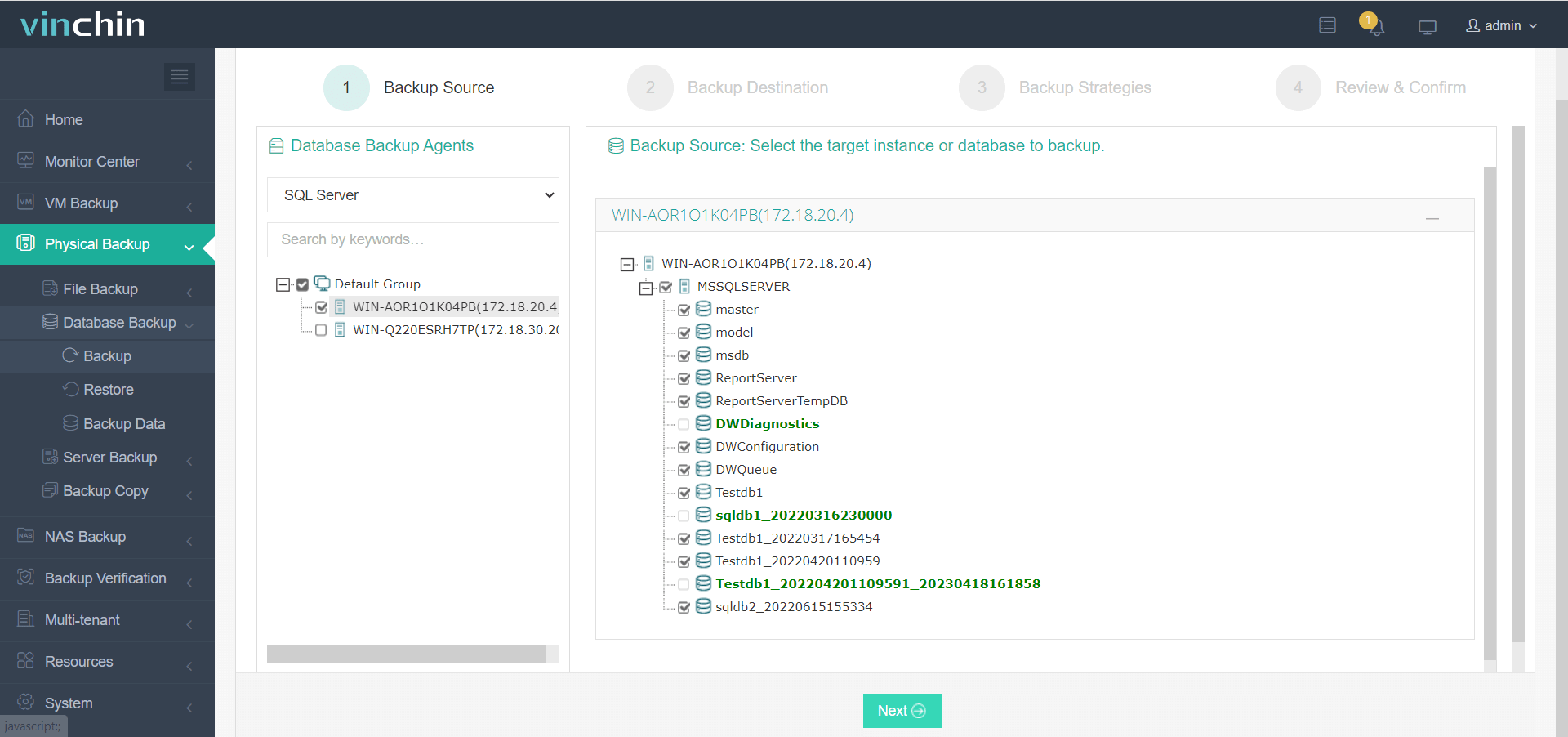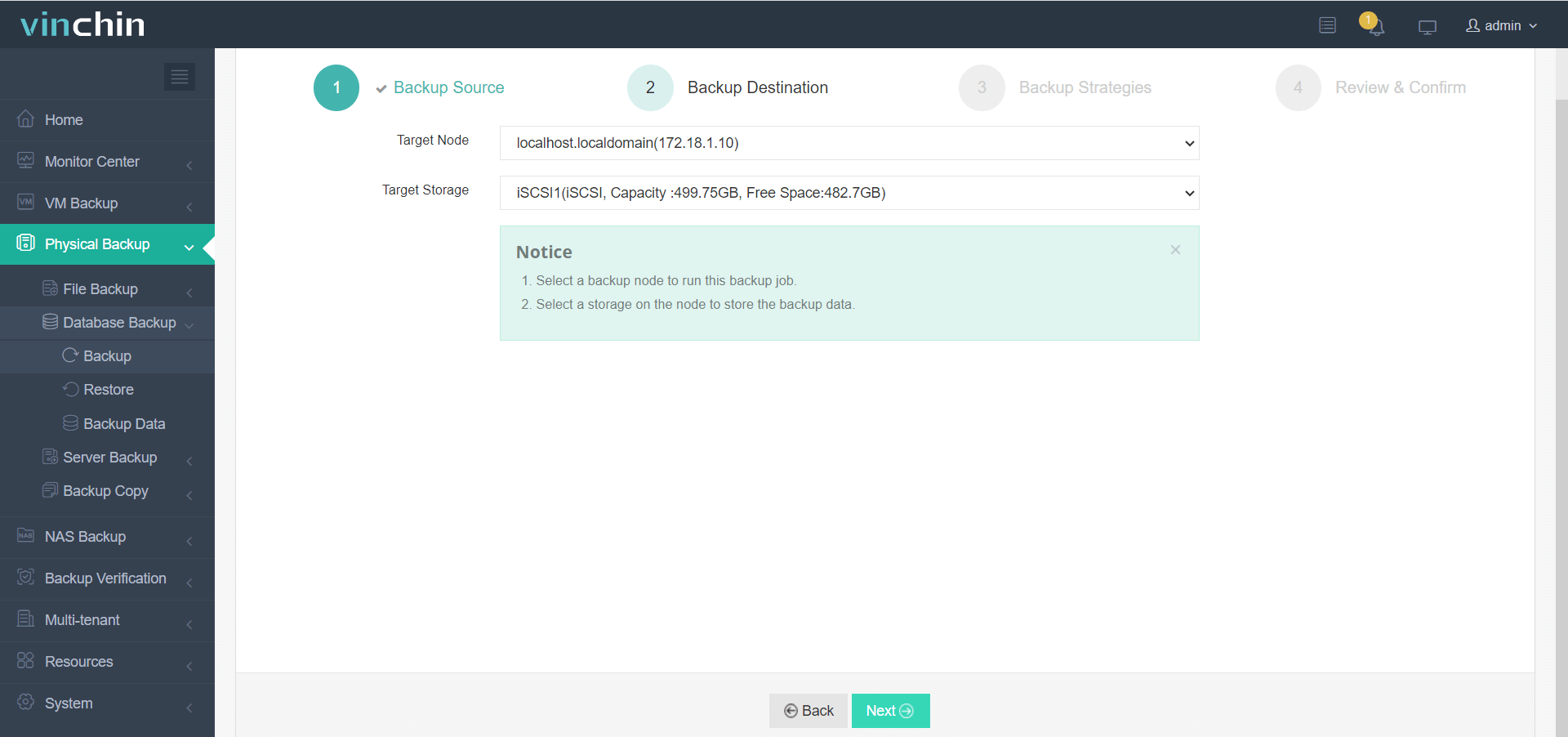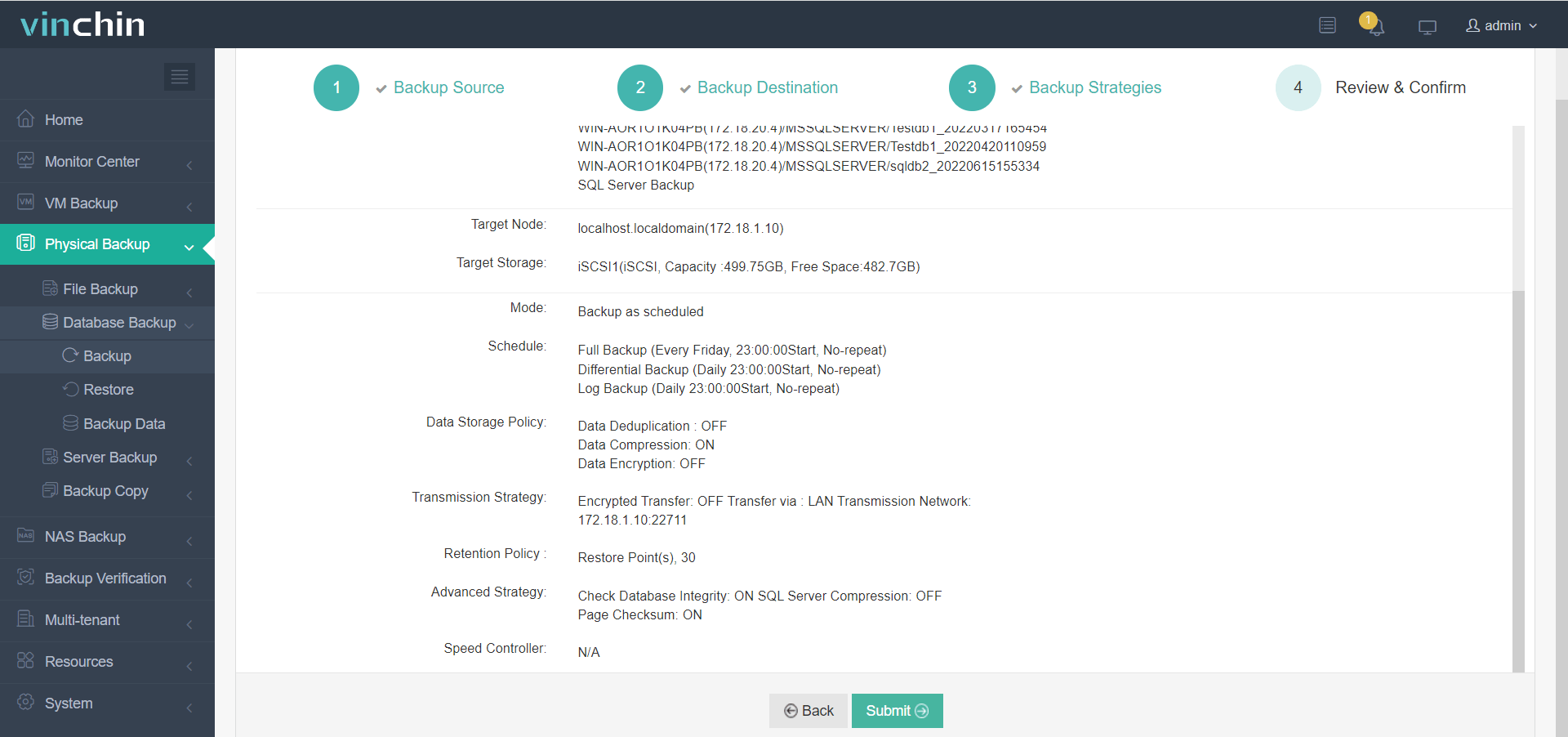-
What is a SQL Server Database Backup Script?
-
Method 1: T-SQL Script for Database Backup
-
Method 2: PowerShell Script for SQL Server Backup
-
How to Automate SQL Server Backup Scripts?
-
Vinchin: Enterprise-Level Solution for Reliable Database Backups
-
SQL Server Database Backup Script FAQs
-
Conclusion
Backing up your SQL Server Database is not just a best practice—it’s essential. A reliable backup script can save you from data loss, downtime, and headaches. But what’s the best way to create and automate these backups? In this article, we’ll walk through the most effective methods to build a SQL Server database backup script, from basic T-SQL to advanced PowerShell automation. Whether you’re new to SQL Server or a seasoned admin, you’ll find practical, step-by-step guidance here.
What is a SQL Server Database Backup Script?
A SQL Server database backup script is a set of commands that automates the process of creating backups for your databases. Instead of clicking through a graphical interface, you use scripts to define what to back up, where to store the backup files, and how often to run the process. These scripts can be written in T-SQL, PowerShell, or even batch files, and are often scheduled to run automatically. The goal is to ensure you always have recent, restorable copies of your data—without manual intervention.
Method 1: T-SQL Script for Database Backup
T-SQL (Transact-SQL) is the native scripting language for SQL Server. Using T-SQL, you can create flexible backup scripts that work for single databases or all databases on an instance.
Understanding Backup Types in T-SQL
Before writing your script, it helps to know the main backup types in SQL Server: full, differential, and transaction log backups. A full backup captures the entire database at one point in time. Differential backups store only changes since the last full backup—saving space and time. Transaction log backups record all changes since the last log backup and are vital for point-in-time recovery if your database uses the Full recovery model.
Basic Full Backup Script
Let's start with a simple example. To back up a single database, you can use the following T-SQL command:
BACKUP DATABASE [YourDatabaseName] TO DISK = N'C:\Backups\YourDatabaseName_Full.bak' WITH FORMAT, INIT, NAME = N'Full Backup of YourDatabaseName', SKIP, NOREWIND, NOUNLOAD, STATS = 10;
This command creates a full backup of the specified database and saves it to the given path. The WITH FORMAT and INIT options ensure the backup file is overwritten each time, while STATS = 10 shows progress.
Backing Up All User Databases with T-SQL
But what if you want to back up all user databases at once? You can use a T-SQL script with a cursor to loop through each database:
DECLARE @name NVARCHAR(256)
DECLARE @path NVARCHAR(512)
DECLARE @fileName NVARCHAR(512)
DECLARE @fileDate NVARCHAR(40)
SET @path = 'C:\Backups\'
SELECT @fileDate = CONVERT(NVARCHAR(20),GETDATE(),112) + '_' + REPLACE(CONVERT(NVARCHAR(20),GETDATE(),108),':','')
DECLARE db_cursor CURSOR READ_ONLY FOR
SELECT name FROM master.sys.databases
WHERE name NOT IN ('master','model','msdb','tempdb') AND state = 0 AND is_in_standby = 0
OPEN db_cursor
FETCH NEXT FROM db_cursor INTO @name
WHILE @@FETCH_STATUS = 0
BEGIN
SET @fileName = @path + @name + '_' + @fileDate + '.bak'
BACKUP DATABASE @name TO DISK = @fileName WITH STATS=10, COMPRESSION
FETCH NEXT FROM db_cursor INTO @name
END
CLOSE db_cursor
DEALLOCATE db_cursorThis script backs up every online user database to a unique file, including the date and time in the filename. You can run this script in SQL Server Management Studio (SSMS) or automate it with SQL Server Agent.
Method 2: PowerShell Script for SQL Server Backup
PowerShell offers a modern, flexible way to script SQL Server backups, especially when you want to integrate with Windows scheduling or other automation tools.
Installing and Configuring SqlServer Module
Before running PowerShell backup scripts for SQL Server, make sure the SqlServer module is installed on your system. Open PowerShell as an administrator and run:
Install-Module -Name SqlServer -Force
If prompted about repository changes or policy updates, accept them so installation completes smoothly.
Backing Up Databases with PowerShell
The key cmdlet is Backup-SqlDatabase, which comes from the SqlServer module. To back up a single database:
Backup-SqlDatabase -ServerInstance "YourServer\Instance" -Database "YourDatabaseName" -BackupFile "C:\Backups\YourDatabaseName_Full.bak"
If you want to back up all user databases on an instance:
$server = "YourServer\Instance"
$backupPath = "C:\Backups\"
$databases = Invoke-Sqlcmd -ServerInstance $server -Query "SELECT name FROM sys.databases WHERE name NOT IN ('master','model','msdb','tempdb') AND state = 0"
foreach ($db in $databases) {
$fileName = $backupPath + $db.name + "_" + (Get-Date -Format "yyyyMMdd_HHmmss") + ".bak"
Backup-SqlDatabase -ServerInstance $server -Database $db.name -BackupFile $fileName -CompressionOption On -ErrorAction Stop
}This script loops through each user database, creates a timestamped backup file, enables compression for smaller files, and stops if an error occurs.
How to Automate SQL Server Backup Scripts?
Automating your backup scripts ensures you never miss a backup—even if you're away from your desk. There are several ways to schedule and automate SQL Server backup scripts.
For T-SQL scripts, the most common method is using SQL Server Agent. In SQL Server Management Studio (SSMS), expand SQL Server Agent, right-click Jobs, then select New Job... Add a job step that runs your T-SQL backup script; set its schedule under the Schedules page.
If you're using SQL Server Express—which doesn't include SQL Server Agent—you can use Windows Task Scheduler instead:
1. Save your T-SQL script as a .sql file.
2. Create a batch file (e.g., backup.bat) containing:
sqlcmd -S .\SQLEXPRESS -E -i "C:\Backups\backup_script.sql"
3. Open Task Scheduler, select Create Basic Task, then follow the wizard steps to schedule your batch file daily or at another interval of your choice.
For PowerShell scripts, also use Task Scheduler by setting the action as Start a program, entering powershell.exe as the program name along with your script's path as an argument.
Vinchin: Enterprise-Level Solution for Reliable Database Backups
While scripting provides flexibility over routine tasks like backing up Microsoft SQL Server databases described above; organizations seeking robust enterprise-level protection may require more comprehensive solutions such as Vinchin Backup & Recovery—a professional platform supporting today’s mainstream databases including Oracle®, MySQL®, MariaDB®, PostgreSQL®, PostgresPro®, MongoDB®, plus Microsoft® SQL Server itself.
Vinchin Backup & Recovery delivers features highly relevant for demanding environments such as advanced source-side compression (for Oracle & SQL Server), incremental backups (including Microsoft SQL Server), batch operations across multiple instances/databases at once; plus powerful retention policies like GFS rotation—all designed around efficiency & compliance needs.
Its intuitive web console makes protecting Microsoft SQL Server straightforward:
1. Select source SQL Server database(s),

2. Choose target storage location(s),

3. Configure backup strategies,

4. Submit the job.

Trusted worldwide by thousands of enterprises—with top ratings across major platforms—Vinchin Backup & Recovery offers industry-leading reliability plus ransomware protection out-of-the-box! Try its fully featured free trial now (60 days)—click below!
SQL Server Database Backup Script FAQs
Q1: Can I create encrypted backups directly from my sql server database backup script?
A1: Yes; add the ENCRYPTION option in your BACKUP DATABASE command along with specifying an encryption algorithm and certificate or key.
Q2: How do I monitor free disk space before running my automated sql server database backup script?
A2: Use xp_fixeddrives in T-SQL or Get-PSDrive in PowerShell before starting each backup; alert if available space drops below safe limits.
Q3: What should I do if my scheduled sql server database backup script fails overnight?
A3: Check job logs in SSMS > JOBS > VIEW HISTORY or Windows Event Viewer > TASK SCHEDULER; review error messages; rerun manually after fixing issues such as permissions or disk space shortages.
Conclusion
A well-crafted sql server database backup script protects against data loss across all environments—from small businesses to enterprise deployments. Whether using T-SQL scripting basics or advanced automation via PowerShell—or leveraging Vinchin’s powerful features—you’ll keep critical data safe while saving time every day.
Share on:






